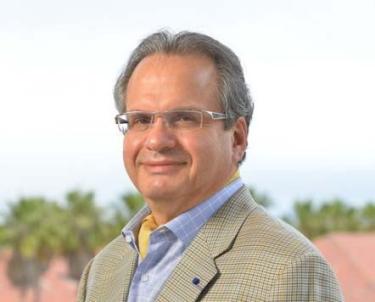Seminar: Surrogate Modeling for the Multi-Physics Design Analysis and Optimization of Hypersonic Systems - Mar. 7

Charbel Farhat
Professor, Aeronautics and Astronautics, Stanford University
Friday, Mar. 7 | 1 p.m. | AERO 111 | Hybrid - Zoom
Abstract: The AFOSR MURI effort, titled “A Robust Multi-Physics Design Analysis and Optimization Framework for Hypersonic Systems Grounded in Rigorous Model Reduction,” unites a multi-disciplinary team of engineering scientists from Stanford University, the University of Minnesota, Rice University, and the University of Notre Dame. This ambitious and collaborative initiative is dedicated to tackling the computational challenges inherent in the development of hypersonic systems. The team’s primary goal is to design a computationally efficient framework for multi-physics design analysis and optimization under uncertainty, harnessing the power of surrogate modeling techniques to achieve remarkable efficiency gains. The lecture will begin with a comprehensive yet succinct overview of the global research effort, offering insights into the project’s objectives, broader impact, and the computational obstacles it seeks to overcome. Among these challenges are the surrogate modeling of quantities of interest versus spatio-temporal fields, the complexities of low-dimensional modeling in the presence of shocks, shock-shock and shock-boundary layer interactions, turbulence, and the intricacies of training surrogate models in high-dimensional parameter spaces for coupled vehicle-trajectory problems and optimization. The discussion will then shift to recent contributions by the speaker, including advanced nonlinear projection-based reduced-order models that address the closure error in the latent space using a deep learning approach. These models have been validated for hypersonic benchmark flow problems and have led to the development of an efficient global optimization method. Finally, the lecture will explore the application of these methods to simulate hypersonic flight dynamics and optimize trajectory planning, demonstrating their potential for advancing the design and analysis of hypersonic systems.
Bio: Charbel Farhat is the Vivian Church Hoff Professor of Aircraft Structures in the School of Engineering at Stanford University, where from 2008 to 2023, he chaired the Department of Aeronautics and Astronautics. He is also Professor in the Institute for Computational and Mathematical Engineering. He was designated by the US Navy recruiters as a Primary Key-Influencer and flew with the Blue Angels during Fleet Week 2014. He is a Member of the National Academy of Engineering (US); a Member of the Royal Academy of Engineering (UK); a member of the Lebanese Academy of Sciences; a Doctor Honoris Causa from Ecole Nationale Supérieure d’Arts et Métiers, Ecole Centrale de Nantes, and Ecole Normale Supérieure Paris-Saclay; a designated ISI Highly Cited Author in Engineering; and a Fellow of AIAA, ASME, IACM, SES, SIAM, USACM, and WIF. He has trained so far about 100 PhD and post-doctoral students. For his research on aeroelasticity, aeroacoustic scattering, CFD, dynamic data-driven systems, fluid-structure interaction, high performance computing, model reduction, and physics-based machine learning, he has received many professional and academic distinctions including: the Ashley Award for Aeroelasticity and the Structures, Structural Dynamics and Materials Award from AIAA; the Spirit of St Louis Medal and a Lifetime Achievement Award from ASME; the Gordon Bell Prize and the Sidney Fernbach Award from IEEE; the Gauss-Newton Medal from IACM; the Grand Prize from the Japan Society for Computational Engineering Science; the John von Neumann Medal from USACM; and the Olof B. Widlund Prize for Excellence in Domain Decomposition Methods from DDM.org.

